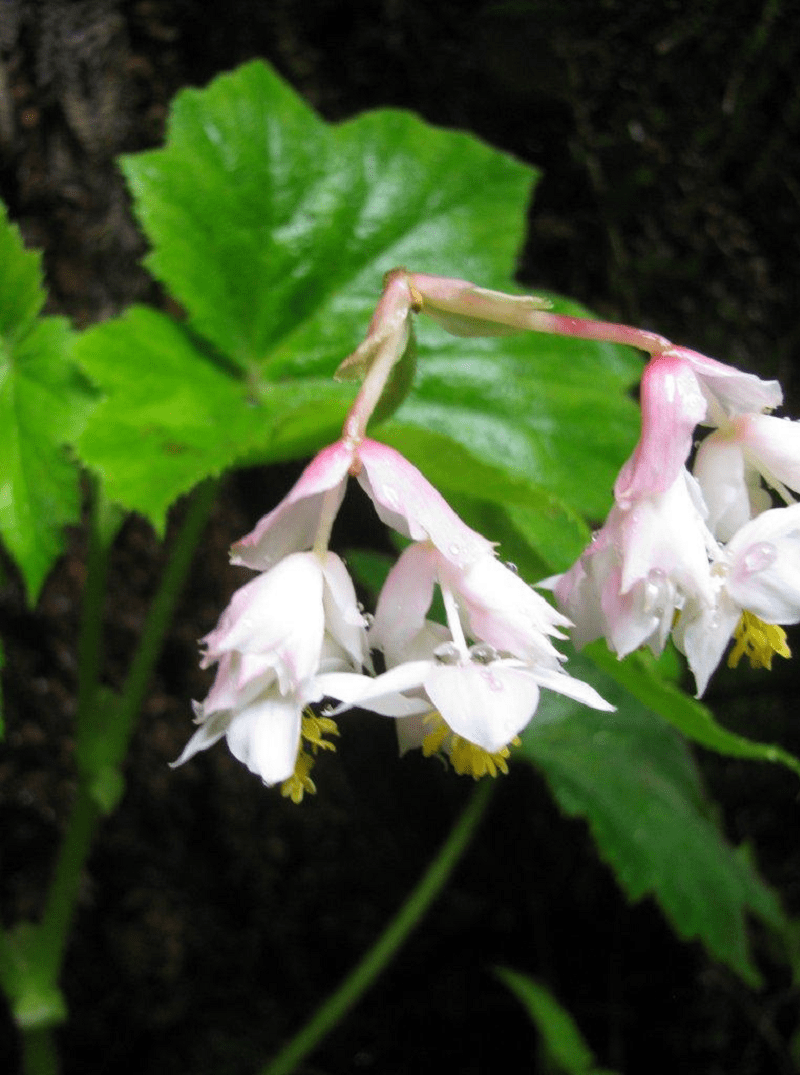Hillebrandia Facts
- Perhaps most notably, the term Hillebrandia serves as the common name for a particularly beautiful variety of rare perennial flowering plant. But, the stunning plant also has several other common names in the local native language. These alternate names include the aka ʻaka ʻawa and the puʻa maka nui. However, the gorgeous species also possesses the official scientific name of Hillebrandia sandwicensis.
- The name of this remarkable plant also honors the renowned German physician named William Hillebrand. Quite sadly for those who appreciate its beauty, this highly unique species appears to have already disappeared from one on the islands that comprise its natural range. Furthermore, and even more regrettably, the Hillebrandia also seems to be rapidly vanishing throughout the rest of its endemic range.
- Very surprisingly, for the moment, the IUCN does not yet place the Hillebrandia on the Red List of Endangered Species. However, the local government lists it as Imperiled. Further, its precarious situation exists due to a combination of factors. Ongoing habitat loss has long threatened this plant. Nonetheless, the threat posed by the ongoing effects of climate change doubtless now forms its greatest danger.
Related Articles
Hillebrandia Physical Description
As one can quite easily see, the beautiful Hillebrandia represents a great beauty of Nature. But, it also garners attention for its size, with some comparatively impressive statistics. This remains true given the fact that the gorgeous plant typically attains a height measuring about 4 ft (1.2 m). However, some individual specimens grow even taller.
Furthermore, this marvelous species also produces yet another reason to admire its appeal. That’s because it produces a great many stems, each of which produces copious quantities of blooms. In addition, the color patterns of these dazzle the eye. This holds true because these flowers generally display bright white and pink in color.
The stunning Hillebrandia sandwicensis also grow from large tubers. These later die back after the fruit develops in early summer. Further, the seeds of the Angiosperm develop as extremely small in size. The plants also typically begin to regrow in early January. Blooms remain quite long-lasting, and may be around from February until some time in June.
- Kingdom: Plantae
- Phylum: Angiosperms
- Class: Eudicots
- Order: Cucurbitales
- Family: Begoniaceae
- Genus: Hillebrandia
- Species: H. sandwicensis
Hillebrandia Distribution, Habitat, and Ecology
Most unfortunately, the stunning Hillebrandia evolved as native to a highly limited and restricted portion of the world. This holds true since the species developed as native to only three specific islands. Furthermore, these form part of the Hawaiian Islands, which in turn forms part of the United States. Additionally, all evidence indicates that the magnificent variety of flora never existed anywhere else.
Further, evidence also indicates that the breathtaking Angiosperm once inhabited a total of four of the islands that currently comprise the state of Hawaii. Sadly, though, the dazzling species now only appears on three of them. More precisely, this current zone of habitation consists solely of the islands of Kauai, Maui, and Molokai. Previously, however, the lovely flora also lived on the island of Oahu.
Most regrettably, though, the marvelous Hillebrandia has now become extinct in that location. This lamentable disappearance partly occurred due to the fact that the fabulous type of flora apparently prefers or needs very specific types of environmental conditions. This remains believed because the only known locations where it appears consist of extremely humid, deep ravines covered in deep lush forest.
In addition, the fabulous species also seems to have yet another especially particular requirement for its choice of native habitat. In point of fact, the relatively few areas in which this particular member of its genus still thrives all appear at sites with altitudes measuring between 2,953-5,906 ft (900-1,800 m). But, even on the islands it currently inhabits, it now grows only in widely scattered pockets.
Species Sharing Its Range
Check out our other articles on 6 Extraordinary North American Reptiles, Dragon Moray Eel, Enchanted Well, Creatonotos gangis, Numbat, African Penguin, Bornean Flat Headed Frog

